By Dan Weisz
Gila Woodpeckers, our most common desert woodpecker in the Foothills, create numerous openings in saguaro cacti. After drilling through the cactus skin they excavate the space downward, and then the woodpeckers leave the hole while the cactus heals. The saguaro secretes a sap that hardens over the damaged tissue to protect the cactus, similar to a scab. That hardened shell creates a strong wall for the saguaro “boot”. Over the years, many other desert birds use these holes in saguaros as nest cavities to raise their young.
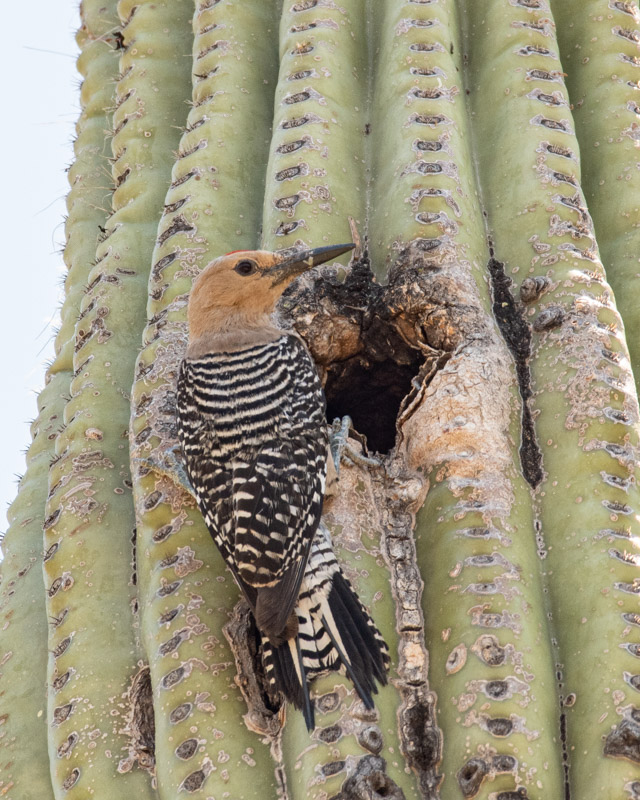
I found a tall saguaro that had Gila Woodpeckers using a nest cavity at the top of the saguaro (in the photo above) and there was another occupied saguaro boot below. Here, a pair of Brown-crested Flycatchers were raising their young. Grasshoppers seem to be the food of choice these days.
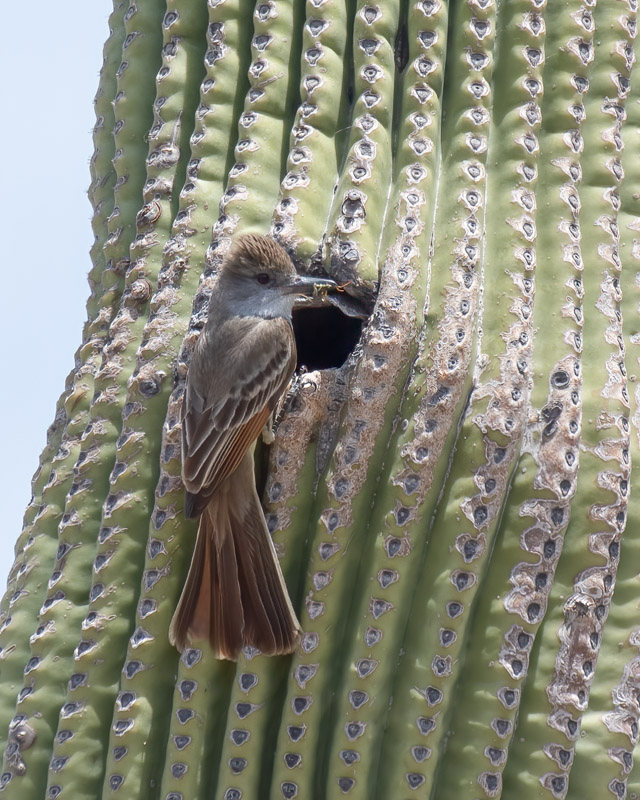
The Flycatchers would usually stop at the entrance, and then dive into the nest cavity. They often would pause with their tails protruding and then continue deeper into the hole.
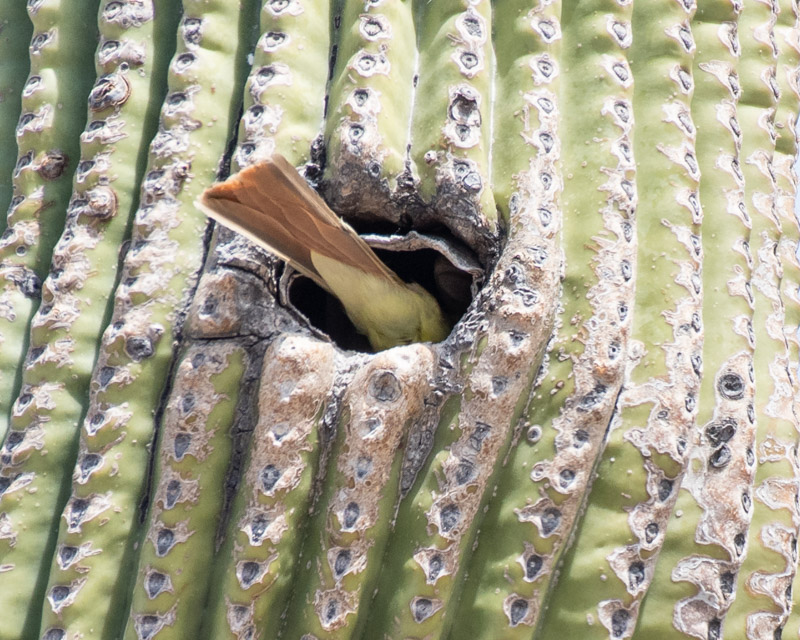
The Brown-crested Flycatchers continued a constant feeding for their young. Sometimes they would return and perch in the open where I could see them. Most of the time I might hear them but would just see a bird clearing the desert trees and flying up towards the nest cavity. Brown-crested Flycatchers are among the many flycatchers and kingbirds that are summer residents in the Sonoran Desert. Many of we humans go to the beach when summer hits, head to a cabin, or return to homes somewhere in the US where we came from where summers are greener and perhaps cooler. These birds love Tucson’s summers as a place to raise their family.
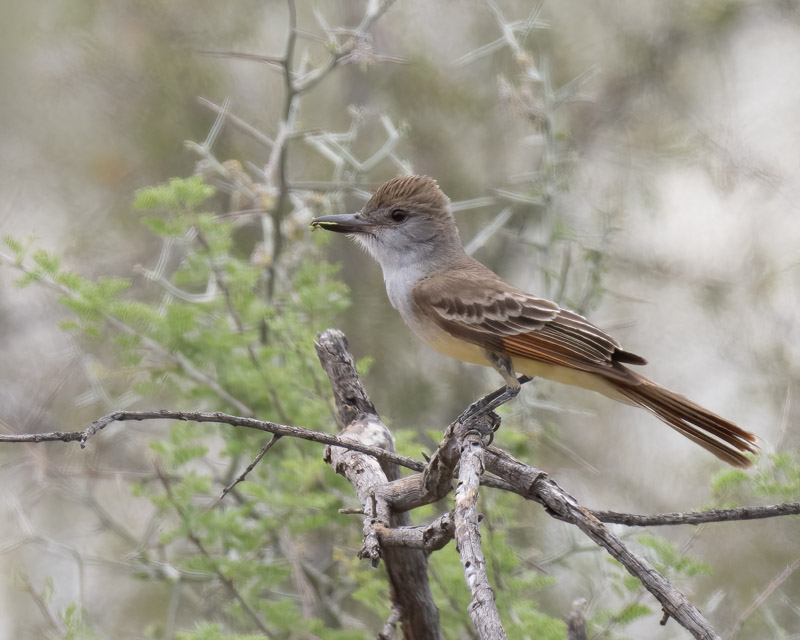
After feeding the young, the adult Brown-crested Flycatcher sometimes paused at the nest hole, looked around……
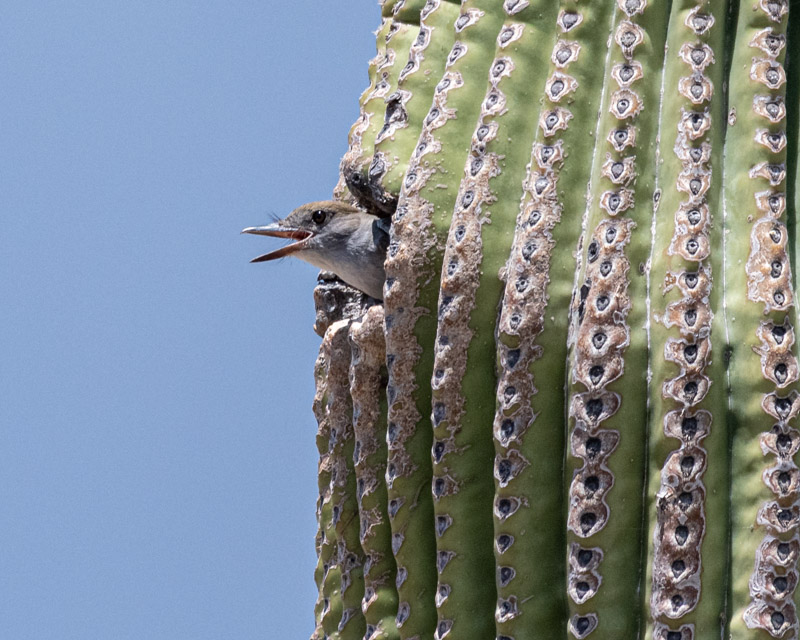
and then burst out of the nest in search of more food for the young. This dive has perfect form!
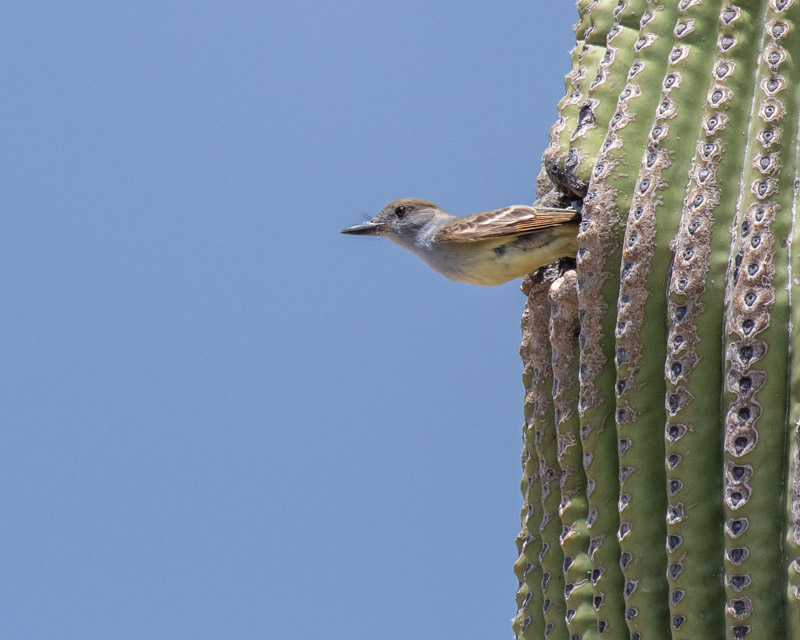
The Brown-crested Flycatcher would never make a predictable exit. They would head in any direction, and who knows why they chose each flight destination. The grace in their wings was beautiful. Here you can see the cinammon tail feathers, the yellow wash of its belly, and the gray throat.
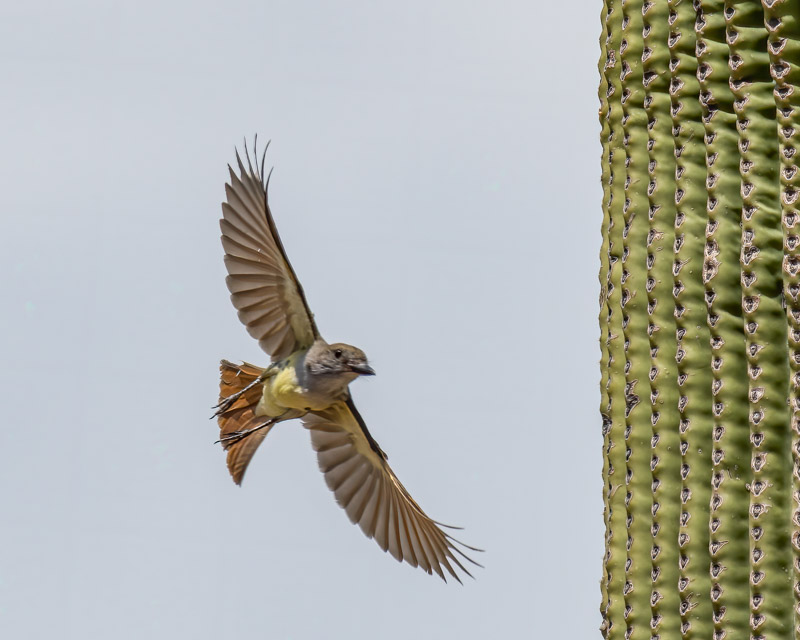
Brown-crested Flycatchers have much larger bills than do the very similar looking Ash-throated Flycatcher. This bird has yet another snack for its young in the nest.
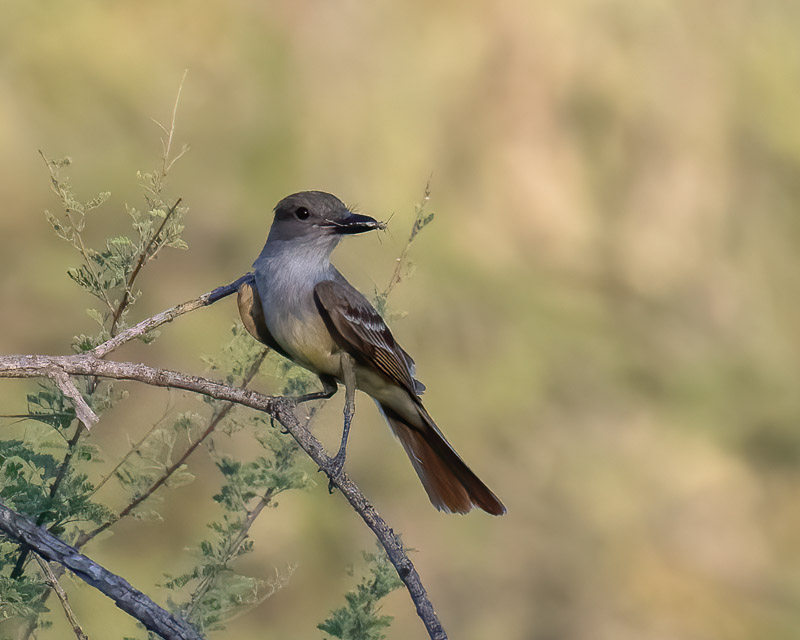
The Brown-crested Flycatchers would dive towards the nest cavity. Sometimes they flew right into the hole.
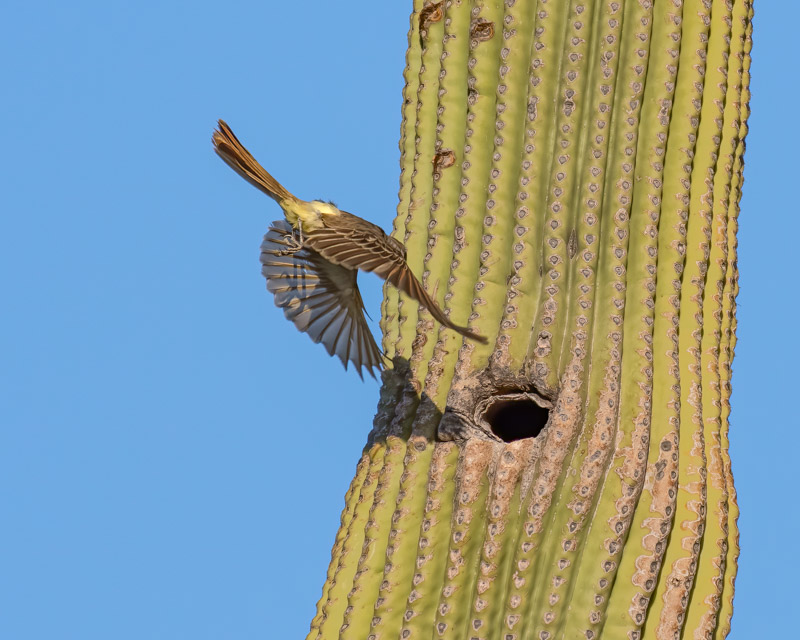
Occasionally they would land on the side of the saguaro and look around before entering the nest. This bird is using its tail to brace itself on the saguaro.
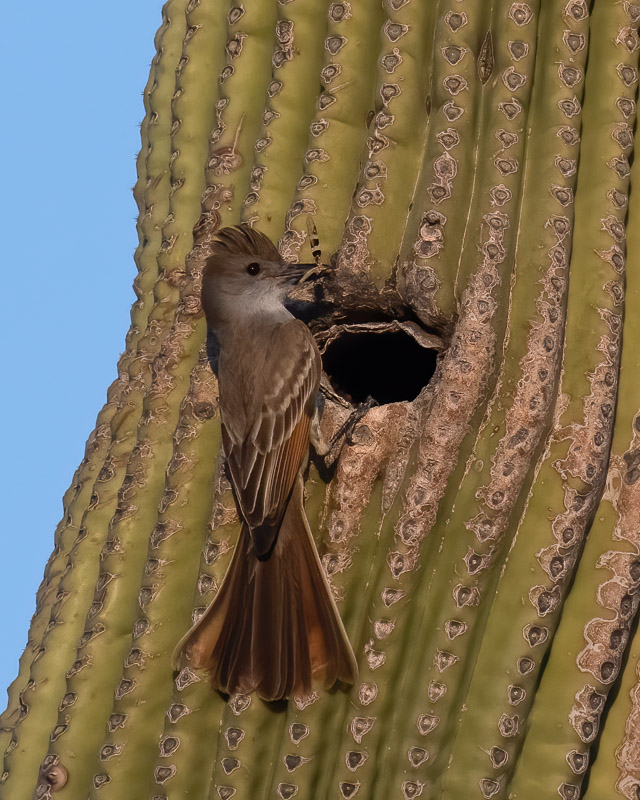
This bird took the elevator up and flew skyward upon exiting the nest. It was different but showed the variability of their flight patterns.
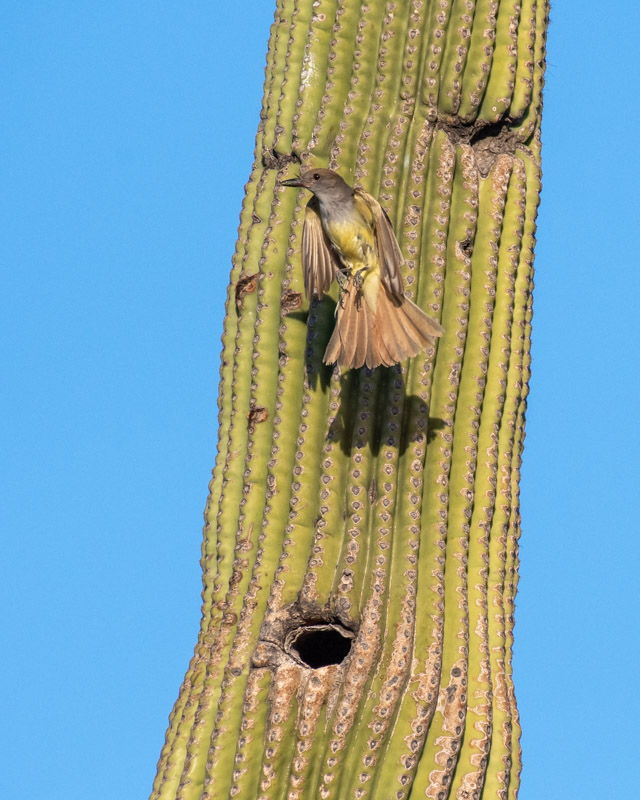
Another exit and another direction.
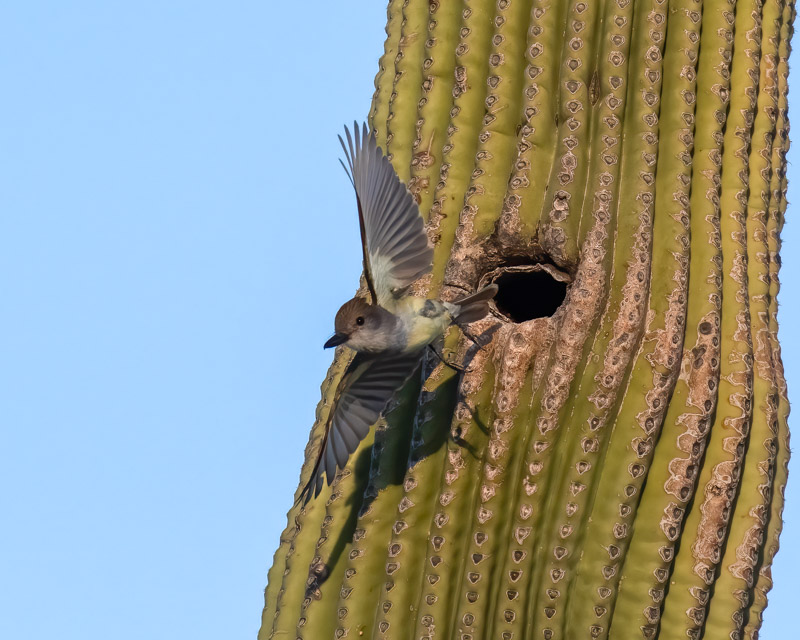
Wings like an angel in this exit. In this shot, you can see some of the identifying features of a Brown-crested Flycatcher. The tail does not have a brown edge to it as an Ash-throated Flycatcher would. The throat is not white like an Ash-throated’s would be.
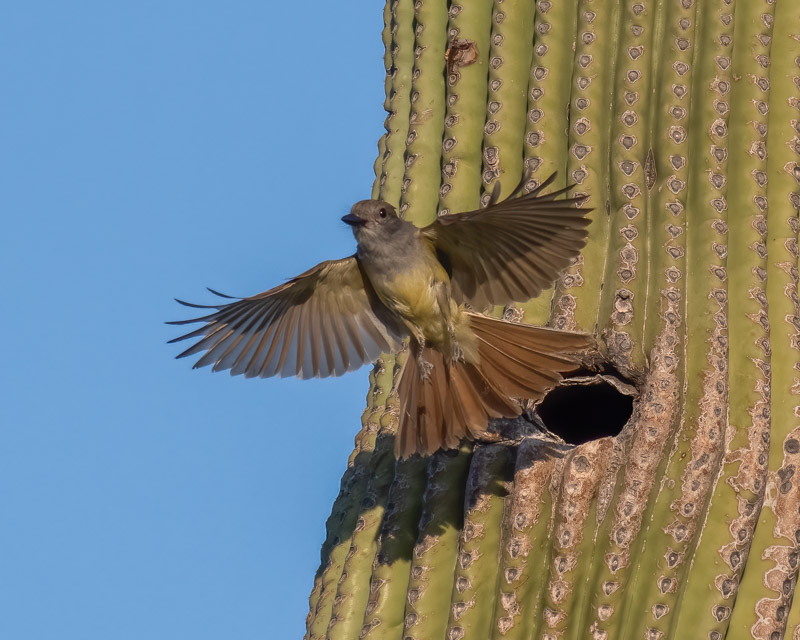
At one point two adults arrived at the nest hole at the same time. The bird below actually landed at the opening first but then dropped down as soon as the other bird arrived. I’m not sure who rules the roost in this family but this bird definitely deferred to its partner. It left with the grasshopper but returned a few minutes later after the first bird had exited the nest cavity.
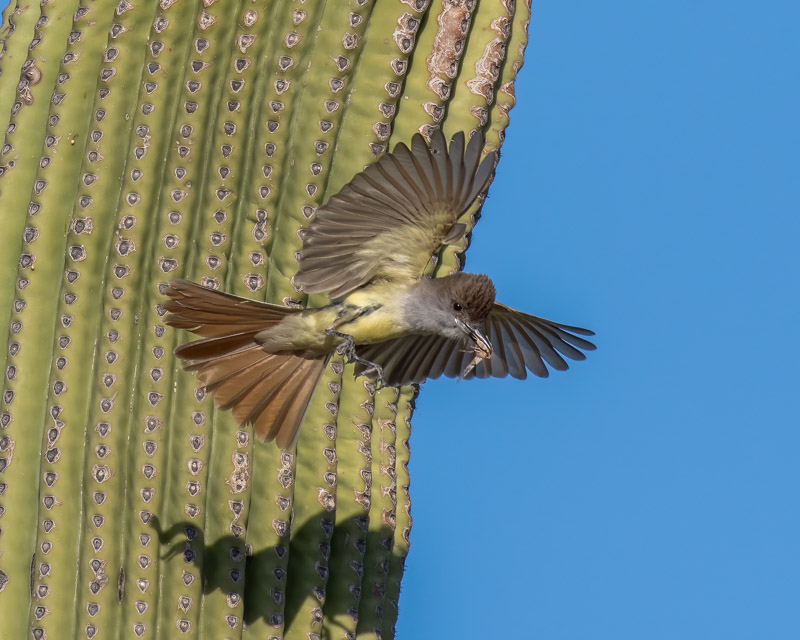
I’ve spent more time at this nest observing these birds and will have more flight photos for you in the future. I’m hoping to see the chicks emerge from the nest cavity but we’ll see how lucky I can be.
